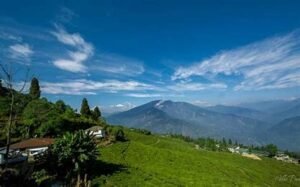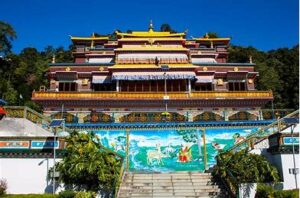Jonbeel Mela is a vibrant and unique cultural event that takes place annually in the state of Assam, India. This centuries-old fair, held in the Morigaon district of Assam, has garnered attention for its exceptional focus on traditional barter trade among various tribes. While most modern economies operate on monetary transactions, Jonbeel Mela stands out as one of the last places where barter trade still exists, providing a fascinating glimpse into a bygone era. This fair is a living testament to the region’s rich heritage and the resilience of indigenous practices.
The Historical Significance of Jonbeel Mela
Jonbeel Mela, which translates to “The Moon Fair” in Assamese, has a rich history dating back more than 500 years. The fair has been held annually for generations, with the earliest records mentioning it during the reign of the Ahom dynasty. Located near the Jonbeel lake, this mela was originally a royal gathering, where the Ahom kings would meet various indigenous tribal communities to foster relationships, trade goods, and promote cultural exchange.
What makes Jonbeel Mela particularly interesting is the way it preserves ancient practices. For centuries, the tribes and communities around Assam have been participating in this event, where barter trade—the exchange of goods and services without the use of money—was the primary mode of economic interaction. Even today, the mela remains a crucial venue for maintaining these age-old trade practices.
The Barter System at Jonbeel Mela
Barter trade is the heart and soul of Jonbeel Mela. In a world dominated by cash transactions, the sight of people exchanging goods directly for other goods without the involvement of money offers a fascinating cultural experience. Various tribal communities from Assam, Meghalaya, and other neighboring regions converge at Jonbeel Mela to trade agricultural products, handicrafts, livestock, and other essential goods.
The trades that take place at Jonbeel Mela are not just economic exchanges—they are also cultural interactions. The items exchanged reflect the diversity and traditions of the different tribes that participate. For example, farmers from the surrounding areas may bring fresh vegetables, fruits, rice, and herbs, while artisans may offer traditional handicrafts, such as woven baskets, jewelry, and pottery. In return, livestock such as cows, goats, and chickens are exchanged, highlighting the importance of agriculture and animal husbandry in the daily lives of the people in this region.
The barter system at Jonbeel Mela is a reminder of a time when communities relied on direct exchanges based on mutual trust and needs. While it is increasingly rare in the modern world, Jonbeel Mela preserves this tradition and allows younger generations to experience and appreciate this form of trade.
Participating Tribes and Communities
Jonbeel Mela sees participation from a wide variety of tribes and communities, each contributing its own unique culture and traditions to the fair. Some of the prominent tribes that take part in the mela include the Tiwa, Karbi, Bodo, and the Khasi people. These tribes, along with others from Assam and the neighboring states of Meghalaya and Nagaland, bring their rich cultural heritage to the fair, which is reflected in the goods they trade and the practices they uphold.
The Tiwa tribe, for instance, is known for its distinctive handicrafts made of bamboo and cane. The Karbi tribe, with its deep connection to the land, contributes agricultural products and organic goods. The Khasi tribe, which hails from Meghalaya, brings its traditional woven textiles and handmade jewelry. This cultural diversity creates a vibrant atmosphere at Jonbeel Mela, as visitors can witness various customs, languages, and traditions coming together in a single space.
In addition to the barter system, Jonbeel Mela also serves as a social gathering for these communities. It is a space where people from different tribes can interact, celebrate their heritage, and strengthen bonds that have been established over centuries. It is not just a marketplace; it is a cultural melting pot where traditions are shared and preserved.
The Rituals and Customs of Jonbeel Mela
One of the most striking aspects of Jonbeel Mela is the rituals and customs associated with the fair. The event usually begins with a ceremonial gathering where tribal leaders, or “rajas,” offer prayers and seek blessings for a successful fair. This is followed by a procession, where people in traditional attire gather to celebrate their cultural pride.
The mela also features a variety of cultural performances, including folk dances, music, and traditional storytelling. These performances allow the tribes to showcase their artistic traditions and keep them alive for future generations. The dances are an integral part of the fair, with various tribal groups performing their traditional forms of dance to the rhythm of indigenous instruments such as the dhol and pepa. These performances provide an opportunity for visitors to witness the artistry of the different tribes and learn more about their customs.
Apart from trade and performances, Jonbeel Mela also includes a number of food stalls offering traditional Assamese and tribal delicacies. Local dishes, made from locally sourced ingredients, provide visitors with a chance to experience the region’s unique flavors. Dishes like “pithas” (traditional rice cakes), “maasor tenga” (sour fish curry), and “khura” (a dish made from fermented rice) are commonly found at the fair, offering a taste of Assamese cuisine.
The Role of Jonbeel Mela in Preserving Cultural Heritage
In an era of rapid modernization, where traditional practices are often overshadowed by technological advancements and economic growth, Jonbeel Mela plays a crucial role in preserving the cultural heritage of the tribes of Assam and the surrounding regions. The fair serves as a platform for showcasing the ancient ways of life that have been handed down through generations, while also providing an opportunity for younger people to connect with their roots.
The barter system at Jonbeel Mela is an important symbol of self-sufficiency and community solidarity. In a world where materialism often takes center stage, Jonbeel Mela reminds us of the value of relationships, trust, and collaboration. The fair is not just about trading goods; it is about honoring the age-old bonds that have existed between these tribes for centuries.
Additionally, the mela has an educational aspect as it draws the attention of scholars, anthropologists, and cultural enthusiasts who come to study the customs and traditions of the participating tribes. The fair helps document and safeguard these practices, ensuring that they are not lost to history. As a result, Jonbeel Mela plays a significant role in the cultural conservation efforts in the region.
Conclusion
Jonbeel Mela is much more than just a traditional fair; it is a celebration of Assam’s cultural diversity, its history, and its indigenous practices. The fair, with its unique focus on barter trade, serves as a living museum of sorts, where visitors can experience firsthand the way communities used to trade, interact, and celebrate life. With its rich history, diverse participation from various tribes, and strong emphasis on preserving cultural heritage, Jonbeel Mela stands as a powerful reminder of the importance of maintaining traditions and customs in the face of modernization.
For those interested in experiencing a truly unique cultural event, Jonbeel Mela offers an incredible opportunity to witness the survival of the barter system and the vibrant traditions of Assam’s indigenous tribes. It is a testament to the strength and resilience of cultural heritage, ensuring that these traditions continue to thrive for generations to come.




